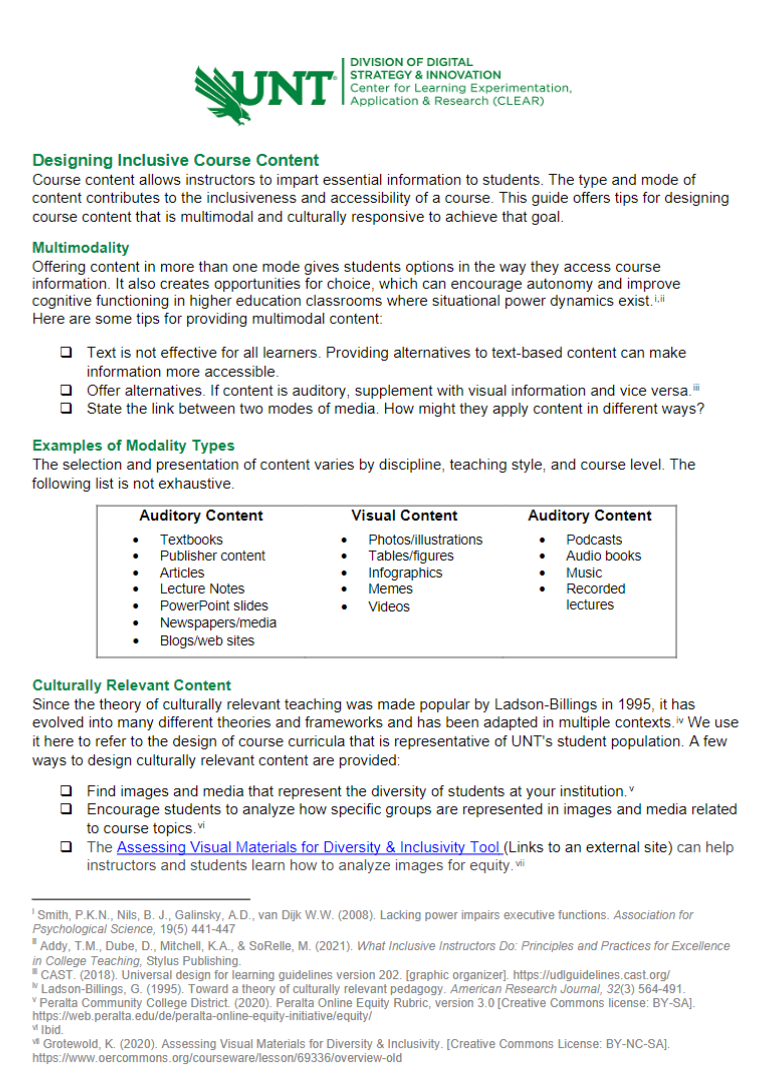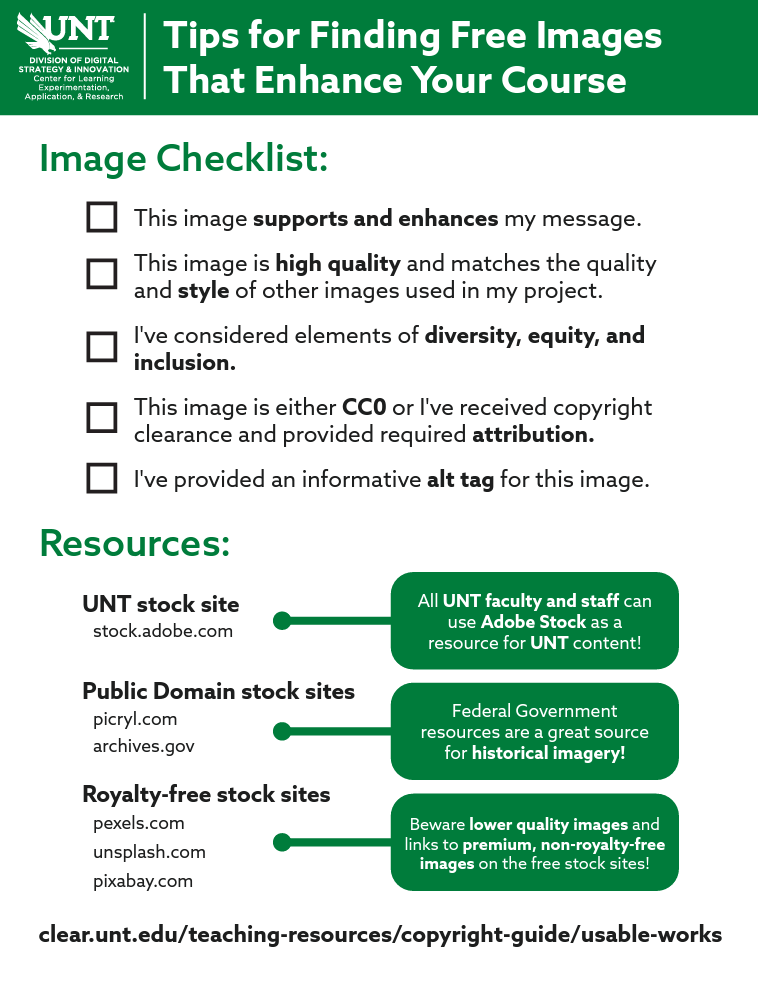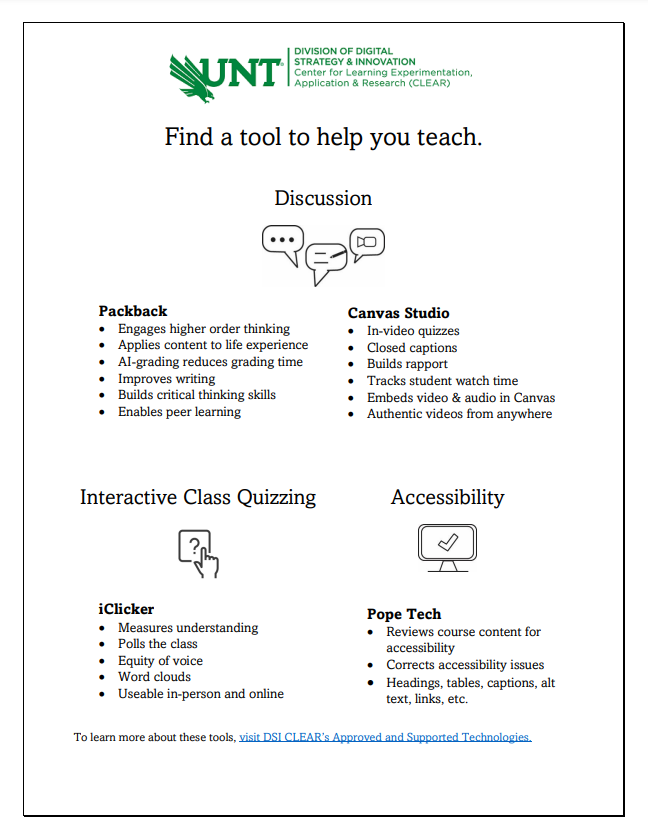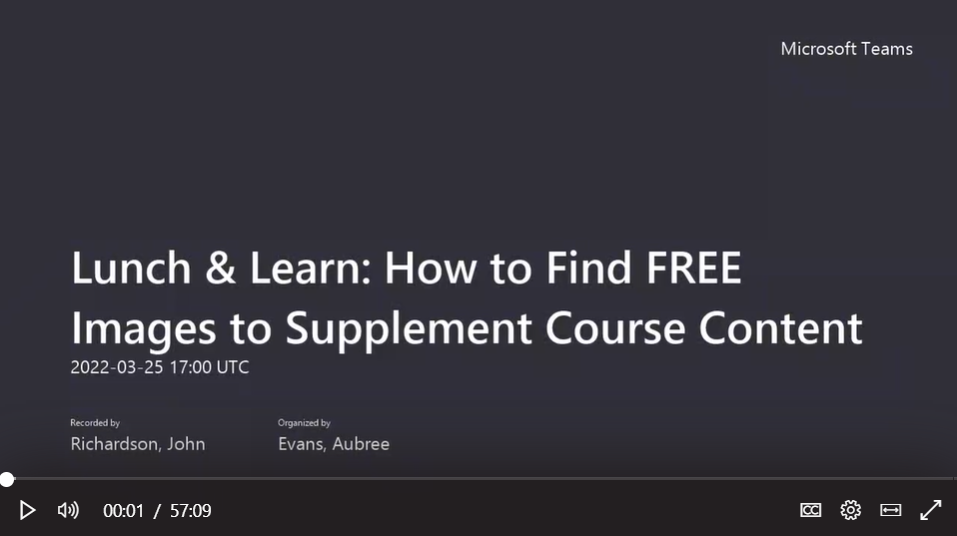- DSI CLEAR
- Teaching Resources
- Theory & Practice
- Methods for Continuous Improvement
- Using AI in the Higher Education Classroom
- Invisible Labor and Faculty Retention Since COVID-19
- Inclusive Discussions
- Inclusive Assessment
- Designing Assessments for Academic Integrity
- Inclusive Instructional Strategies
- Instructor Presence in the Online Classroom
- Tips for Providing Personalized Feedback to Students
- Course Design for Student Retention
- UNT's CLAW 3 Active Learning Classroom Instructional Guide
- UNT Faculty Teaching & Learning Resource Guide
- Growth Mindset in the Higher Education Classroom
- Course Outcomes & Objectives
- Multimedia Course Design for Student Engagement and Retention
- Level Up Learning With Portfolios
- Group Work in Higher Education: Benefits & Practices for Success
- Open Educational Resources & Copyright Essentials for Instructors
- Evaluating OER Resources
- Accessibility Online
- Copyright Guide
- Online Teaching
- UNT Syllabus Template
- Teaching Consultation Request
- Open Educational Resources & Copyright Essentials for Instructors
- Evaluating OER Resources
Inclusive Instructional Strategies
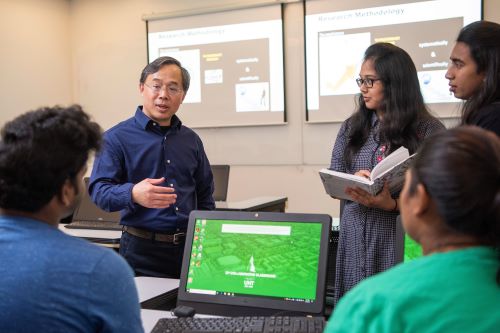
Instructors deliver course content to a diverse class of students and will undoubtedly teach students with different abilities or demographic characteristics who, due to structural inequalities, may face unique barriers to learning. As you design your course, consider how to make it inclusive for every student, regardless of ability or background, in order to give them an equal opportunity at succeeding in your course. Fortunately, inclusive teaching is a thoroughly researched topic. In this literature review, we will cover foundational frameworks for inclusive teaching and share tips on how you can build an inclusive class.
Inclusive teaching, as defined by Addy et al., (2021), is to foster a teaching environment intentionally designed to give every student the opportunity to reach their full potential and to foster belonging —both of which are interconnected (Addy et al., 2021, p. 4). Essentially, you want your classroom to be where everyone can learn regardless of age, ability, identity, ethnicity, or background. According to UNT, 41.5% of undergraduate students are first generation students, 14% are ages 25 and over, 4% are international students, and non-white students comprise 59% of the UNT student population (The University of North Texas, 2022). According to the Office of Disability Access (ODA), an average of 1,200 students utilizes ODA services every year. Accessibility and equity affect a lot of UNT students, and one teaching practice might not fit every student. Students arrive to class with their own unique experiences and abilities shaped by their social characteristics, attitudes, past experiences that shape their ability to approach learning and course content (Addy et al., 2021, p. 4). If a student feels excluded or marginalized in the classroom it can inhibit learning, and, in turn, academic performance and potentially future opportunities. Therefore, making sure each student's circumstances as learners is valued can have long lasting positive impacts on student lives.
Universal Design for Learning (UDL)
Universal Design for Learning (UDL) is a commonly used framework used to reach students of different abilities and backgrounds. UDL operates on the principles of incorporating multiple means of representation, expression, and engagement in the classroom (Center for Applied Special Technology, 2020, p. 15-16). At its core, UDL seeks to break accessibility and usability barriers to learning. While it not only addresses issues faced by disabled students and students of other marginalized backgrounds also, it also views disability as a social construct that society fails to accommodate rather than a personal failing or individual burden (Center for Applied Special Technology, 2020, p. 16). Below are some ways you can incorporate UDL principles into your teaching:
-
Multiple means of representation
-
Ensure that videos and audio content have transcripts and closed captioning, include descriptions of images and videos used in the course, utilize demonstrations and models to relate to student’s prior knowledge, and use “alt-text” to describe graphic symbols (Adams et al., 2021, p. 21).
-
Multiple means of expression
-
Allow students to respond to assignments through different modalities such as through audio, video or text (Adams et al., 2021, p. 21).
-
Align feedback with developing students’ self-reflection abilities, provide models or examples of assignments, and scaffold assignments using checklists and guides to make assignments more approachable (Adams et al., 2021, p. 21-22).
-
Multiple means of engagement
-
Invite student feedback on course activities, provide reflection opportunities, design activities that are relevant to students’ lives, and ensure activities are inclusive for students of different ethnic, cultural, and identity groups such as students who identify as LGBTQ+ in some way (Adams et al., 2021, p. 21).
Additionally, Adams et al., (2021) describe how you can align UDL principles with social justice practices in education:
-
Identify barriers that may exist for students and how to remove them (Adams et al., 2021, p. 22)
-
Provide options for demonstrating their understanding of content (Adams et al., 2021, p. 22). For example, give students an option to privately send you presentation slides on a given topic rather than having them present in front of the whole class.
-
Reflect on your own biases, and biases students may have of you (Adams et al., 2021, p. 22). Understanding your biases is the first step in removing them from your teaching.
-
Be open to difficult conversations around privilege, social status, identity, and ability (Adams et al., 2021, p. 22). On this same token, empower students to share their perspectives and experiences (Adams et al., 2021, p. 22)
-
Reflect on the impact of your action, intention, and strive to build an environment that is intentionally inclusive and equitable (Adams et al., 2021, p. 22).
To learn more about how you might accommodate students with specific disabilities, reference Teaching & Interacting with Students with Disabilities on UNT’s Division of Student Affairs website.
Components of an Inclusive Course
An inclusive classroom can be built through course design, specifically through course guidelines, content, and instructor presence (Adams et al., 2021).
Syllabus Design
-
The syllabus is a “first impression” of the instructor for students, outlines class guidelines, and sets the tone for the course (Adams et al., 2021, p. 8-9). Consider using a welcoming tone in your syllabus rather than an authoritarian one (Adams et al., 2021, p. 5). Provide “clear expectations of success” by using plain, personal, learning focused language instead of jargon, motivate students, emphasize the relevance of the course content to student’s personal or professional goals (Adams et al., 2021, p. 9).
-
UDL principles, as discussed above, suggest putting student resources and accommodation sections at the beginning of your syllabus so it is easy for students to find that information, and shows that you value student accessibility (Adams et al., 2021, p. 14)
Course Content
-
Make sure course content is accessible for people with disabilities. This includes ensuring that the color contrast of graphics, links and text is visible to students with visual impairments. Alt text should also be added to images for students who use a screen reader (Adams et al., 2021, p. 17). Include transcripts or subtitles with multimedia sources like videos or podcasts to ensure that content is accessible for those with hearing impairments or for students who simply do not have time to listen to an entire video or podcast and would rather read the material instead (Adams et al., 2021, p. 17). In this same vein, media that adapts on a mobile device will accommodate students who listen to course content on the go, or who do not have access to reliable internet access or a personal computer (Adams et al., 2021, p. 17).
-
When possible, add content from differing perspectives and sources in order to appeal to students with different social or cultural backgrounds (Adams et al., 2021, p. 19),
-
Too much information crammed into a class period or module can overwhelm the student’s ability to retain information in their long-term memory, according to the Cognitive Load Theory (Schunk, 2020; Adams et al., 2021, p. 19-20). Avoid introducing an overwhelming amount of content students each class period. Instructors can help facilitate learning by making connections between themes, concepts and information explicit in the online course shell so that students know what information is most relevant to pay attention to and how it fits together (Adams et al., 2021, p. 21).
-
If you want support in making your course accessible for all students, the Center for Learning, Experimentation, Application and Research (CLEAR) offers consultations with faculty through the Accessibility Consultation Request Form or via email at CLEAR.Compliance@unt.edu to help review their courses for accessibility. Learn more about this service, as well as other accessibility and inclusive training and course design resources at the DSI CLEAR Accessibility Online website.
Inclusive Assessments
-
Design assessments that are relevant and varied to reduce anxiety in students (Adams et al., 2021, p. 24). Using multiple methods of assessments creates a more inclusive testing system wherein students are able to show their strengths. For example, not all students are good test takers, but they may do well in assignments and show an understanding of material. Offering multiple methods of assessing understanding of course content allows students with different abilities and strengths to demonstrate their mastery of the concepts taught (Adams et al., 2021, p. 24)
-
Consider implementing authentic assessments that require students to use the concepts taught in class in real-world scenarios rather than just through the standard exam format. This could take the form of problem-based learning, discussion boards, roleplay, and experiments (Adams et al., 2021, p. 25). Assessments that are relevant to tasks, skills, or situations students will use in the future help maintain motivation (Adams et al., 2021, p. 25).
-
Consider the role instructor feedback plays in the inclusive assessment experience. Return feedback as soon as possible, describe what specifically contributed to your feedback, and deliver it in an empathetic way (Adams et al., 2021, p. 25-26). For further reading, we recommend checking out this article in the UNT Faculty Resource Hub on providing Personalized Feedback.
Intentional Communication
-
Record a welcome letter or video for students at the start of the semester to foster familiarity and relatability between yourself as the instructor and your students (Adams et al., 2021, p. 31). The goal with a welcoming correspondence is to give students a sense of connectedness with you.
-
Beyond welcome videos, you may find it beneficial to create videos that overview each week’s module. In just two to five minutes, you can let students know what the module covers, its relevance, and any information or deadlines they need to be aware of as they start parsing through the course content (Adams et al., 2021, p. 34).
-
Another communication plan is to utilize weekly announcements on course matters and assignments and remind students of office hours (Adams et al., 2021, p. 33-34). This may look like an announcement summarizing the previous week or module, highlighting the important aspects of class or content students should be aware of, or looking forward to the next week or module to give students an idea of what to expect.
-
If remote instruction occurs, there are strategies you can employ to foster an inclusive environment. For example, while it may be easier to connect with students with videos on, consider not requiring it. You never know where a student is joining from, what they have going on around them, or if they have adequate technology to participate in Zoom calls fully (Adams et al., 2021, p. 35). Consider instead having points in the lecture where student's check-in using the chat or use just their voice to communicate rather than their video (Adams et al., 2021, p. 35).
Highlight Institutional Support
-
Provide an easy to access section in your syllabus and Canvas page that highlights the many services UNT offers to students, especially for students who may need accommodations or writing services (Adams et al., 2021, p. 39).
Conclusion
DSI CLEAR hopes that this article provides strategies for designing inclusive classrooms. If you find yourself stuck or unaware of how to proceed with a certain aspect of your course design in a way that is inclusive and equitable, make use of services offered by CLEAR and DSA who are there to assist in course design and student accommodations.
References
Adams, S., Bali, M., Eder, Z., Fladd, L., Garrett, K., Garth-McCullough, R., Gibson, A. M., Gunder, A., Iuzzini, J., Knott, J. L., Rafferty, J. & Weber, N. L. (2021 June 8). Caring for Students Playbook: Getting Started with Key Terms and Challenges. Every Learner Everywhere. https://www.everylearnereverywhere.org/resources/
The University of North Texas. 2022. Getting to Know UNT Students. Accessed August 15, 2022.
Addy, T. M., Dube, D., Mitchell, K. A., SoRelle, M. E. (2021). What Inclusive Instructors Do: Principles and Practices for Excellence in College Teaching, Stylus Publishing.
Cash, C., Cox, T., & Hahs-Vaughn, D. L. (2021). Distance educators attitudes and actions towards inclusive teaching practices. Journal of the Scholarship of Teaching and Learning, 21(2), 15-42. doi: 10.14434/josotl.v21i2.27949
Office of Disability Access. 2022. ODA Services and Disability Information. The University of North Texas Division of Student Affairs. https://studentaffairs.unt.edu/office-disability-access/about-us/services#:~:text=Our%20Services,over%201200%20students%20each%20semester.
